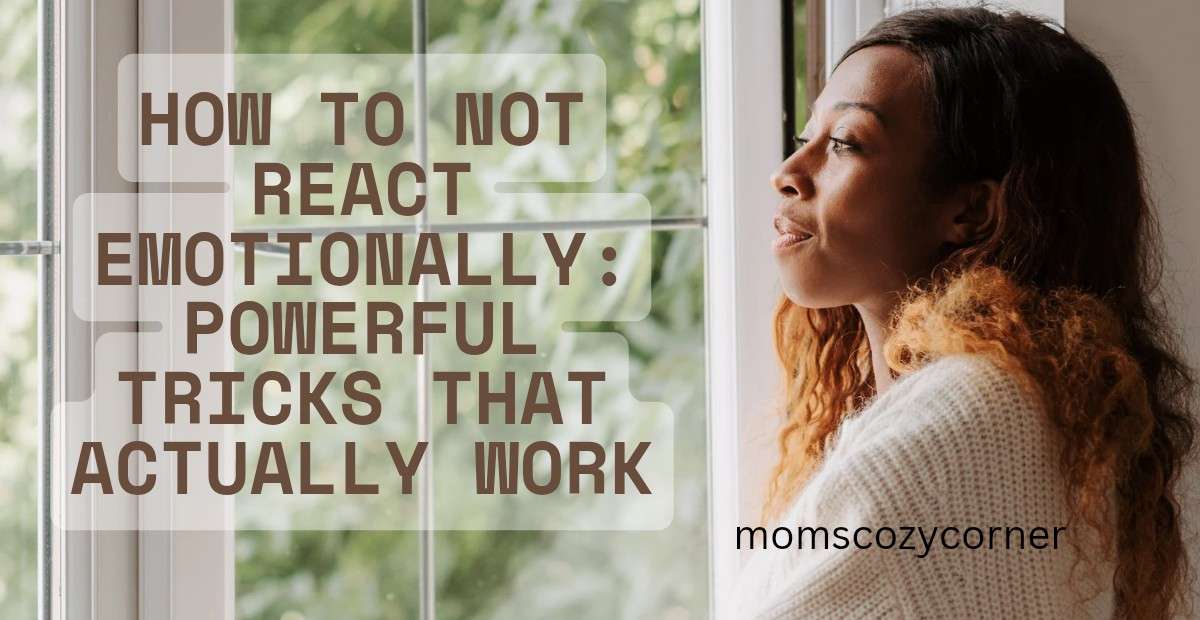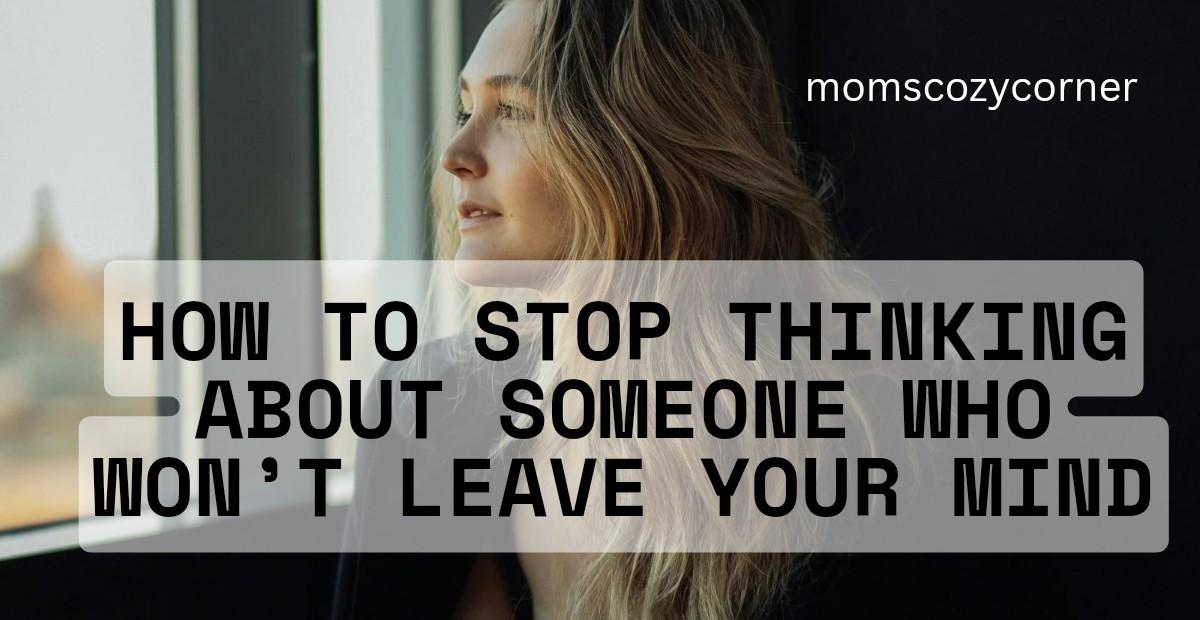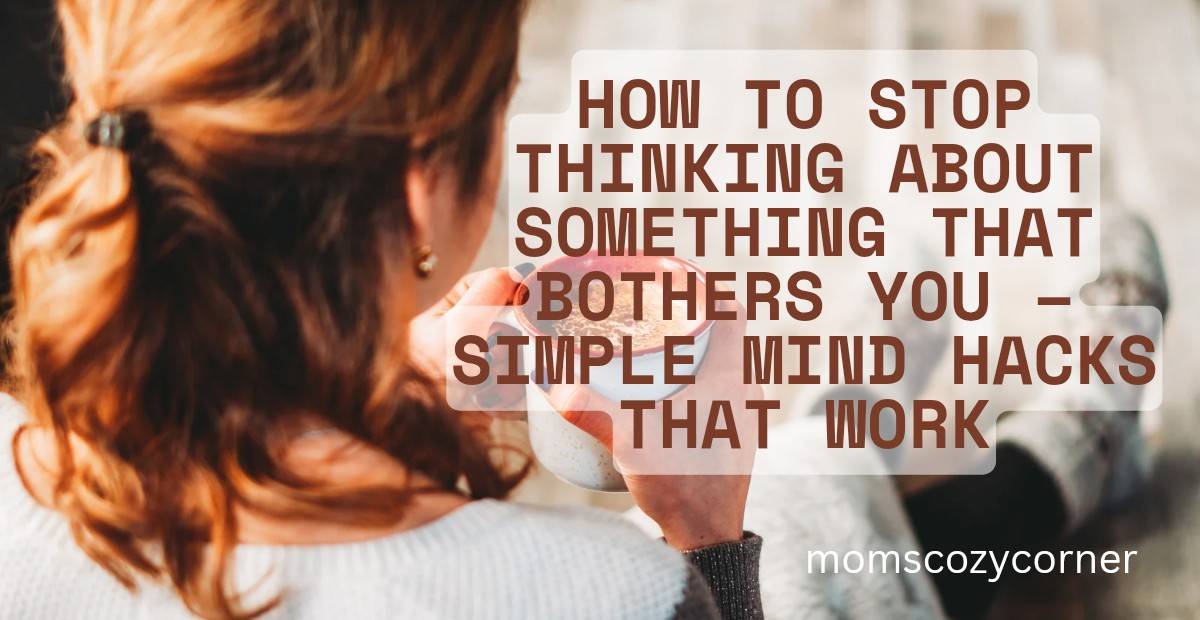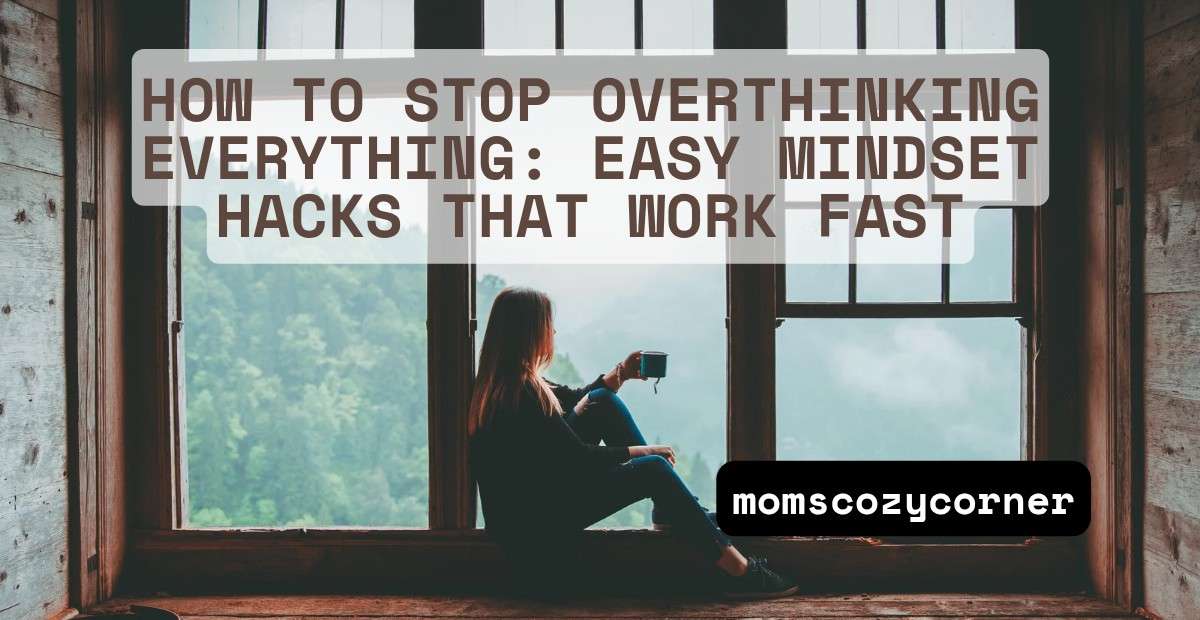How to Not React Emotionally: Life-Changing Habits for Moms
Introduction
We all want a happy, peaceful life, but sometimes emotions take over. I’ve snapped at my kids, argued with my husband, and instantly regretted it. Just last night, my daughter was cranky, and while I was focused on her, my mom asked me to grab a bag from my husband. Stressed and triggered, I started to react emotionally and snapped, “Why can’t you get it yourself?” Later, I felt awful. It wasn’t about the bag—it was my emotions reacting.
And here are some practical tips that can really help you pause, stay calm, and not react emotionally in such moments.
If you’ve ever wondered why you feel things so deeply, I’ve explained it in detail here: Why Do I Feel Things So Deeply?. Reading that first can make today’s tips on staying calm even more meaningful.
How Do I Identify My Triggers?
You know, for every problem we want a solution, right? But the thing is, before fixing it, we need to know what’s causing it. The same goes with our emotions—if we don’t spot our triggers, we can’t really control them. And triggers can be anything… stress, pain, or sometimes just people around us. Let’s check out a few common ones that make us react without thinking.

Common Emotional Triggers in Everyday Life
You know, we all get triggered here and there. But honestly, it’s those everyday reactions that shape how peaceful or messy life feels. If we could just handle those better, life would feel way lighter.
Most of the time, it’s the people right around us—your kids whining, your partner throwing in a sharp comment, relatives butting in, or just the usual family chaos. It’s the little things that push our buttons.
For me? My husband and his phone. He comes home, still scrolling, not even looking at us, and ugh… that just sets me off. One small thing, and suddenly the whole evening feels ruined. But here’s the thing—once you figure out what really triggers you, you can start working on it instead of letting it control your mood.
Journaling to Spot Hidden Patterns
Journaling is one of the best ways to self-analyze, no doubt. But let’s be real—most moms don’t even get time to comb their hair properly, so sitting down with a pen and notebook feels impossible when emotions are running high. What works for me is finding easier ways. Some days, I just grab my phone and record a quick voice note—what happened, how I felt, and how I could’ve react emotionally in a better way. Later, I look back and see patterns.
Another way I do this is with my kids. Every night after reading storybooks, I walk them through their day—what they did and what they liked or didn’t like. They’re too little to express much, but by modeling, I’m helping them self-analyze while also reflecting on my own day.
Mindfulness Practices for Early Awareness
Mindfulness isn’t about being perfect—it’s about catching yourself before stress takes over. Think of yoga: focusing on the stretch calms your body and mind. The same effect comes from small things like sitting in nature or listening to music.
And here’s a real one—mindfully using the phone. I can’t tell you how many times I’ve taken a “quick two-minute coffee break” while cooking, only to scroll and realize 20 minutes have flown by. The food’s half done, the chores are waiting, and suddenly I’m reacting emotionally for no reason. By slowing down and actually noticing how we use our gadgets, we save ourselves from unnecessary stress. Pay attention to what you’re doing, and you’ll spot your triggers much earlier.

Training Yourself To Be Less Reactive
Now that we’ve identified the triggers, the next step is training ourselves to handle them better. By training, I don’t mean rigid routines—it’s about consistent practices that gradually shape how we respond. Let’s look at a few ways.
Building Self-awareness Step by Step
Building self-awareness starts with noticing what’s really happening inside us. Once, I snapped at a relative. I felt anger toward her, but deep down, disappointment in my mother-in-law for not standing by me in her own family. That mix of emotions drained my energy for days. Later, I realized if I had just paused, named those feelings, and not let myself react emotionally, I could’ve saved myself the drain. Awareness grows step by step, reflection by reflection.
Reframing Negative Thoughts
Looking back, what really triggered me wasn’t just my relative—it was the thought that my mother-in-law should’ve stood by me after all I’d done for her. That negative loop pushed me to react emotionally. But if, in that very moment, I had told myself, “I’ll still do my duty as a daughter-in-law, but she doesn’t deserve my love,” things would’ve been different. That little reframe—one I actually follow now—could’ve kept me calm and saved me from snapping in the heat of the moment.
Developing Emotional Resilience over Time
Emotional resilience isn’t about never reacting—it’s about bouncing back better each time. Once we start identifying our triggers and training ourselves through mindful habits, we slowly build that inner strength. Sure, there are still moments we snap, but the difference is we learn from it and handle the next situation with more calm. Reframing negative thoughts plays a huge role too. For example, reminding ourselves that disrespecting someone who disrespects us doesn’t solve anything. What we can do is focus only on what’s in our control—us. One simple truth I carry now is this: we’re not here to change anyone, and no one will change for us. Holding on to that thought makes it so much easier to rise above and stay grounded.

Practical Ways to Stay Calm Instead of Reacting
Staying calm doesn’t mean we’re bottling up our feelings. It’s more about finding better ways to release those negative emotions without hurting ourselves or others. When we don’t react emotionally, we create space to choose a calmer, kinder response. So, let’s check out some practical ways that actually help us stay calm.
Breathing Techniques for Instant Calm
Everywhere you look, people say “just breathe” to calm down. And yes, it works—but honestly, in the beginning, I thought, how will I remember to inhale for four counts when I’m about to burst? It felt so unrealistic. So, I started small. I picked one daily trigger—my kids messing up the house. Normally, I’d snap, “Who did this?” Why now? But instead, I took one slow, deep breath. Not counting, just pausing and telling myself, I don’t have to react. That little shift has saved me, and I believe handling small triggers this way prepares us for bigger ones too.
Grounding Methods to Reduce Tension
I use my senses in my own way to calm down during stressful moments. For example, when I see the house in total toy chaos, I pause and really see my kids. That sight reminds me—many moms wish for this very life. Touching their toys makes me feel grateful I can provide them, and hugging or kissing my little ones brings instant calm.
Sometimes I even say, “Looks like you had so much fun; I can tell from your toys!” and invite them to clean up with me. One might join, the other might not—but the pause keeps me from snapping, and usually they end up helping.
For me, grounding isn’t about following all five senses perfectly. It’s simply about finding that pause that stops an emotional reaction—and every mom can shape it in her own way.
Step Away and Create Space
You know what’s helped me a ton? Just stepping away when things heat up. Some people think it’s rude, but honestly, it saves me from blurting out stuff I’ll regret later. When I walk off, it’s not like I’m ignoring them—I’m actually giving myself a minute to think clearly. I replay what just happened, sort out what I really feel, and figure out how I can explain my side without being all harsh. When I come back, the talk usually goes way smoother. That little pause makes all the difference. And if someone still calls you rude even after your calm explanation later—well, that tells you something about them too.

Practice Self-compassion Instead of Self-criticism
We moms often show compassion to others but forget ourselves. After snapping at my elder daughter in a rush before the rain, I felt like the worst mom. But her words, “I love you so much, but you’re mad at us,” hit me hard. Instead of drowning in guilt for days like before, I chose self-compassion. I reminded myself this one incident doesn’t define me. And I hugged her, apologized, and learned my lesson: don’t rush. I even wrote it on a paper and stuck it on my wall. That kindness toward myself helped me bounce back in an hour, not days.
How to Control Emotions Without Showing Them on Your Face
Before our words hit their ears, our face already tells the story. And let’s be real, no one wants to show every emotion on their face. The trick? Stay conscious of expressions—you can actually train yourself to keep them calm.
Honestly, I never thought controlling emotions on my face was possible until I tried it myself. I first learned from an Insta mom who always kept a calm face when her kids threw tantrums. I started observing her, then practiced in front of the mirror. At home, when both my kids shouted at once, I stayed blank-faced instead of reacting. They actually paused, calmed down, and gave me space to guide them. Later, I noticed my brother does this too, so I picked it up from him too. If you’ve got someone around you with that calm face, just observe, practice, and use it—it really helps. With regular, consistent practice, you can even master this calm face and use it anywhere.
Final Thoughts
To react emotionally doesn’t mean you’re suppressing your feelings—it means you’re handling them in a healthier way. By noticing your triggers, practicing your reactions, and training your facial expressions, you can stay calm even in tough moments. This not only reduces stress and frustration but also protects your relationships and energy.
Like any skill, it takes practice. So, if you know a mom who could use this reminder, feel free to share it with her. And I’d love to hear from you—drop a comment about what helps you stay calm or share a moment when you managed your emotions well. Your story might inspire me, or another mom, with a new idea. Thanks for reading, Mama—it means a lot.




